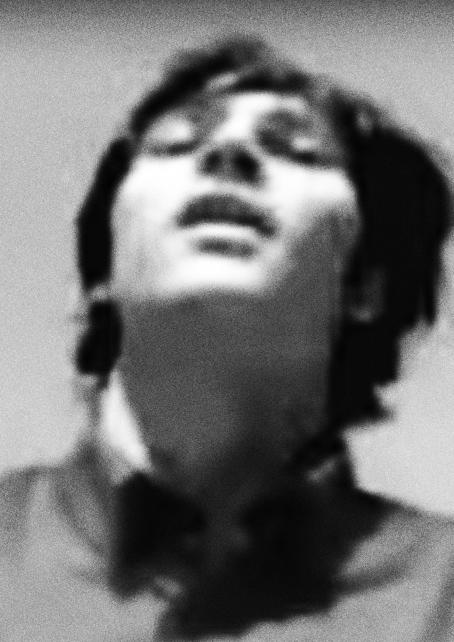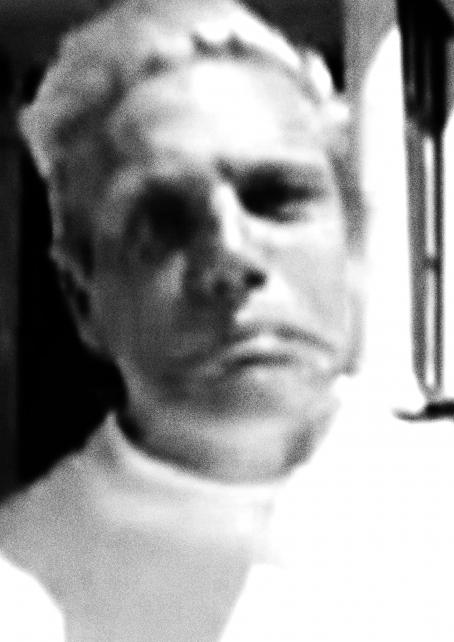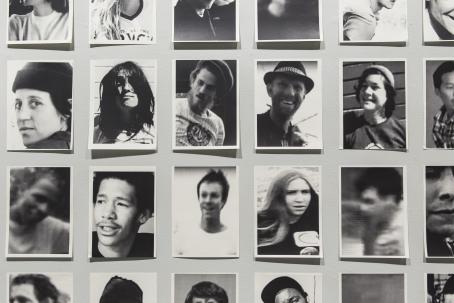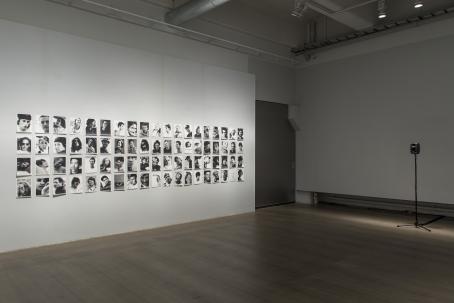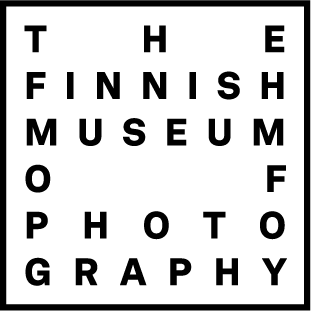Even though Waelder started his whole body of work through analog photography, this exhibition shows us different ways of appropriation of the photographic medium since none of the images shown here are “taken” this time by himself, but are reframings and edits of images made by others that he takes from films, magazines and books that are influential in the skateboarding culture.
The work Professional Portraits (A Chronology of Skateboarding) is an ongoing series that Waelder started in 2016. He takes film stills from hundreds of skateboard videos and documentaries that he watches on a daily basis on the Internet. He reframes these stills, focusing his interest in the faces of different skateboarders that have influenced his practice and contemporary skate history. These portraits are taken in some of the cases the moment before the person performs a trick or after a fall, and are printed with a domestic monochrome printer in sketch paper installed directly to the wall, making its fragility more evident.
In the big format wallpaper, we can see a figure with a very specific pose. We do not know if he is falling or just walking through. This work is a reinterpretation of an iconic photograph by Ivory Serra of the NYC skateboard pioneer Andy Kessler. All the surroundings of that mythical image have been removed and the fact of oversizing it gives a more sculptural aspect that predominates the room.
As we advance through the room, we see a big format photograph, made from a cutout scan from a magazine article published in 2005. The work creates a narration within the context of the show, where we can follow up a relation between the written text and what is left from the image in its new framing.
Ian Waelder finds it interesting to work with sound, because it gives a strong connection to a very specific image and experience in our minds. In this exhibition, he has made an environment created by a sound piece that plays once every ten minutes, filling the apparent emptiness of a wall. In between moments of silence, we hear crashes and sounds of wounds: recorded moments of him falling on the ground while attempting to perform a trick with his skateboard from 2008 until 2012, extracted from the videos that his friends have filmed of him through the years.
Ian Waelder (b. 1993 in Madrid, Spain) is an artist based in Frankfurt am Main, Germany. In his work he explores suburban culture from memory. Working with photography, sound, text or sculpture, he collects experiences from his environment, interested in researching the traces and marks left by the individual. Waelder has received the Full Contact Prize 2013 at the SCAN International Photography Festival in Tarragona and has shown his work at spaces such as L21 Gallery, Salón and La Casa Encendida. Currently he's part of the class by Peter Fischli at Städelschule in Frankfurt am Main.
The exhibition has been selected in the annual open call for exhibitions at Project Space. The Finnish Museum of Photography's Project Space is intended for exhibitions and projects that use photography or other lens-based media as tools for art or research. The space shows stimulating exhibitions by both fresh talents and more established artists.
---
A feel of rhythm and an aroma of sweat overcome my senses on this Wednesday evening as the popping sound of wooden tails and the connection of metal trucks to metal coping takes place. It's about time, it's about space. The production of urban bodily senses. Balancing, moving and responding while seeing, hearing and touching architecture.
There is concrete, asphalt and metal. There is some brick and wood. Every once in a while there is a tree. It is no mystery why the tree is there: someone planned it, just like everything is planned – and then falls apart. To be oppositional, appropriative of the city, irrational in organization. It was in the streets that spontaneity expressed itself – in an area of society not occupied by institutions – social space has assumed new meaning.
A curb is an obstacle until you grind across it. A wall is but ledge until you drop off it. A cement bank is a useless slab of concrete until you shred it. Benches, stairs, banks and smooth pavements. Citizens use some of these elements every day, almost to the point of excess, but still have no appreciation for the structure itself. Most people think handrails are for those with mobility problems. Christian Hosoi says they are for ollie nose grinds.
Text written with extracted quotes by Henri Lefebvre, Chris Carnel, Sarah Thornton, Mark Mardon, Ron Allen and articles by Thrasher and Skateboarder Magazine. From “Skateboarding, Space and the City: Architecture and the body” by Iain Borden.
The Finnish Museum of Photography
Project Space
The Cable Factory, The Cable Factory, Tallberginkatu 1 G, 00180 Helsinki
